The Persona Series: Where to Start?
Our initial plans to look at Atlus’s Shin Megami Tensei series as a whole were swiftly curtailed when we noted just how massive an undertaking it was. Really, there’s enough there that it could be the length of at least three of our normal Where to Start? guides. Instead, we’ve decided to take it a bit more piecemeal, and where better to kick off than with its most successful spin-off sub-series? Especially given Persona has been celebrating its 25th anniversary and will soon be bringing multiple titles to brand new platforms.
The origins of Persona lie in Shin Megami Tensei if…, which released in Japan for the Super Famicom in 1994. Taking on a smaller-scale setting and story than the main series, if… puts players in the role of a high school student exploring their school and five towers. With the ability to recruit demons to their cause, they can also be joined by a human ally. The popular reception to the game, and in particular its high school setting, led to the creation of both the first Persona title, as well as the first Devil Summoner game.
The series can be divided into two distinct phases. The first consists of Revelations: Persona and the two Persona 2 titles. These largely keep the general dungeon-crawling gameplay and narrative structure, taking players to various locations as the stories progress. They still make up distinct experiences, and are certainly not afraid to put their own spins on things, particularly evidenced by Persona 2′s approach to its duology. This first phase is more challenging to get hold of as of now, as while the second phase titles are the subject to remasters and ports to modern systems, these are very much stuck on older systems.
The second phase consists of Persona 3, Persona 4, and Persona 5, each of which has received additional versions and spin-offs. These are where Persona has truly branched itself out from the rest of Shin Megami Tensei, implementing its now ubiquitous daily simulation elements as players go through a school year with flexibility as to when they wish to head into its dungeons. The gameplay changes are complemented by stylistic choices, with the games’s aesthetics and soundscape taking on a more modern flavour that more closely connects them to present-day life.
There are common narrative themes that run through the series. Psychology, particularly the work of Carl Jung, and the collective consciousness play major roles and are often examined through the casts’ Personas, which provide their combat powers, as well as the existence of other realms that are home to the Shadows making up the vast majority of the games’ foes. Most of the games feature significant influences from different mythologies, and also bring in their own individual themes. All of the games, and their numerous spin-offs, have something to offer RPGamers and we hope this guide helps upcoming players figure out their personal way into the series.
By Sam Wachter, Alex Fuller, Matt Masem, Luis Mauricio, Paul Shkreli, Ryan Costa, and David McBurney
Revelations: Persona
Available on: PlayStation, PlayStation Portable
Japan-only: PC
Where it all properly began, Revelations: Persona is an early PlayStation RPG released in 1996 that brought many of the staples of the Persona franchise worldwide for the first time. There were a lot of issues with the localization of the PS1 version, which was significantly improved upon in its 2009 PSP Shin Megami Tensei: Persona release. This was one of the first games to allow intricate negotiation with enemies for additional perks, equipment, and spells. The game was one of the earlier titles to make use of the modern-day “high schooler saving the world” trope that is still seen in plenty of games to this day.
The characters and story hold up and, while rudimentary by today’s Persona standards, are still worth getting to know. The combat is somewhat complicated, while its unique experience system, which rewards characters on their combat performance, has its own problems. It’s punishingly balanced by today’s standards, and is more likely to be appreciated by fans of challenging nostalgic RPGs. There are insanely difficult dungeons and areas that are near impossible to traverse without a guide.
Revelations: Persona is not a perfect game, and isn’t easy to recommend as a place to start for all of the issues listed above. It works as a place to learn some of the tenets of the franchise, but many of the other games feature an actual tutorial to help that process along. This is not the game to start with, but is a game to possibly return to, to see what it was like dealing with the frustrations and learn about an underrated cast.
Persona 2: Innocent Sin
Available on: PlayStation Portable
Japan-only: PlayStation
After the experiments of Shin Megami Tensei if… and Persona, Atlus decided to bet a little bigger on the fledgling franchise and started on an ambitious duology, Persona 2: Innocent Sin and Persona 2: Eternal Punishment. Innocent Sin didn’t release in English until 2011’s PSP version, a game that resembles its original release in most particulars, but makes some allowances for a slicker UI and mechanical updates that bring it more in line with the duology’s second half.
Persona 2: Innocent Sin is fundamentally an attempt to make the mechanics of the first game more palatable while going further with the strong “recognizable non-apocalyptic modern world” trappings. The game’s mostly silent protagonist is 18-year-old high school senior Tatsuya Suou who, along with his friends, gets roped into playing part in a rumor called the “Joker game”. The rumor goes that if you dial your own cell phone number and tell it your heart’s desire, the Joker will appear and grant your wish. Upon playing the game, the band of high schoolers is shocked to find that Joker actually does appear, and he makes it clear he’s going to kill them as vengeance for a grievous wrong they committed. Instead of killing them he disappears but not before stealing the souls and ambitions of the gang of Tatsuya’s friend Eikichi.
The game is driven by its strong, frequently intentionally bizarre plotting and extremely charming cast of characters, and its plot is also cleverly interwoven into the game mechanics. As rumors are spread, the world changes to reflect them, and both the plot and gameplay make ample use of this fact. The rest of the gameplay is not terribly dissimilar to the first game. The rougher experimental systems have been sanded off and the game generally is just a fair bit easier than its predecessor. Navigation is less frustrating, and the overworld map is infinitely more navigable than Revelations: Persona’s untextured gray morass. Though dungeons contain similarly difficult and unpredictable elements such as pitfalls, they’re generally navigable even for those with a poor sense of direction.
P2IS is a decent starting point for the series. It tells a story that isn’t strictly self-contained as it is part one of a clear two-part narrative, but is perfectly understood and enjoyed without knowledge of the events of its predecessor. Persona 2: Innocent Sin can be fairly argued as the first game in the series that was at least as mechanically simple to parse as its contemporaries, and while it isn’t perfectly put together, it’s much easier to get through the passable mechanics to the excellent writing, characterization, and plotting. Whether or not Persona 2: Innocent Sin ends up as one’s first experience with the franchise, it is worth tracking down at some point on any fan’s journey through the franchise as part one of what is perhaps the most intriguing overall plot in the series.
Persona 2: Eternal Punishment
Available on: PlayStation
Japan only: PlayStation Portable
Persona 2: Eternal Punishment is the direct sequel to Innocent Sin, offering a new perspective through the character of Maya Amano, who is a reporter investigating the Joker Curse, an occurrence where disturbing rumors come to life. Maya goes to investigate a rumor at Seven Sisters High School, where she, her friend Ulala, and detective Katsuya find the school principal dead, and a man named Joker claiming responsibility. The group meets Joker, only to be knocked out. It’s then that they meet Philemon, a wise spirit who informs the cast that there is more danger to come if Joker isn’t stopped. Philemon also grants our heroes their Personas as a means to defend themselves from Joker and stop the impending doom looming over Sumaru City.
One of the unique aspects of Eternal Punishment is the game’s perspective shifting to Maya from Tatsuya from Innocent Sin. Characters who interacted with Tatsuya in the first game act differently towards Maya, which is a big part of the story. Given Eternal Punishment is the other side of the overall duology’s tale, it means playing the first part is integral to understanding the trajectory of narrative events. Eternal Punishment features turn-based combat, where both the player and Persona level up, but it’s fairly slow moving. The game also has a punishing encounter rate that would be unforgivable by today’s standards.
Persona 2: Eternal Punishment has a fantastic story that will keep players glued to the game, but given how slow the battle system is, and the insanely high encounter rate, it’s easy for players to get deterred. It also suffered from odd release circumstances. While the game was released in North America in 2000, Innocent Sin was not available in English until its release on the PSP, only initially giving players half the story. Like the other titles from this phase of the series, it is mostly recommended for those with a ton of patience who wish to see how the series has grown. It’s also a shame that the PSP version of Eternal Punishment was only released in Japan, as it includes plenty of quality-of-life improvements including fast-forwarding through battles, better load times, and a new special scenario enhancing its connections to Innocent Sin.
Persona 3 / Persona 3 Portable
Available on: PlayStation 2, PlayStation Portable
Coming to: PC, PlayStation 4, Xbox One, Nintendo Switch
Persona 3 marked the series’ transition from PlayStation to PlayStation 2, bringing with it a host of new changes that nowadays identify the series. In Persona 3, players control a silent protagonist as he arrives in the Japanese city of Iwatodai. Upon leaving the train station, the clock strikes midnight, marking the start of the Dark Hour, during which most citizens are turned into coffins and Gekkoukan High School is replaced with an elaborate tower called Tartarus. Players are tasked with controlling a team of students who comprise the “Specialized Extracurricular Execution Squad” (SEES) to explore Tartarus and discover the nature of the Dark Hour and the goal of the Shadows that stalk humans during it.
Persona 3 is drastically different from prior games in the series, both in terms of design and aesthetics. This is the first game in the series to include simulation elements, bifurcating the game into a school day simulator by day, and a somber dungeon crawler at night. During the day, players increase their social links with friends and classmates, which provide stat bonuses when fusing new Personas for battle. As each month counts down towards the full moon, the members of SEES can expect to face a new major story encounter, and need to prepare themselves by advancing through the floors of Tartarus. The game also features significant combat changes, marking the first instance of its take on the Press Turn battle system first used in Shin Megami Tensei III, as well as the use of AI to control the other party members.
The graphics are given a complete overhaul and feature a sharp and eye-catching anime aesthetic, while its frankly stunning use of handgun-like devices as catalysts to summon Personas is still powerful so many years later. Featuring a sleek user interface and incredibly vibrant soundtrack from Shoji Meguro, Persona 3 set the new standard for the series. Meanwhile, Persona 3 Portable went a long way to establish the PSP for RPGamers, offering a more streamlined experience as well as a new version of the game with a female main protagonist that accommodates them with plenty of narrative adjustments. It’s a perfectly good place to start, especially for those who want to see how the series’ second phase has developed from the base it established.
Persona 3 FES (The Answer)
Available on: PlayStation 2
Known as Episode Aigis in Japan, The Answer is a unique epilogue added to Persona 3 as part of its enhanced Persona 3 FES release. Players take on the role of Persona 3 party member Aigis as the SEES members embark on a new dungeon called the Abyss of Time after discovering they are stuck in a time loop. As players work through the Abyss of Time, hoping to find a way to end the loop and encountering the android Metis, they are given bits of the story relating to each character’s background and how they obtained their Persona. The team works through the dungeon hoping to find a way to end the loop.
The Answer is combat focused, and the difficulty is somewhat unforgiving. While The Answer easily adds over twenty hours of content, a lot of it is spent in the dungeon and there is much less expansion of Persona 3’s story than many will be hoping for. Furthermore, a lot of the best elements of Persona 3 such as the Social Links are removed here, as it’s mainly a full dungeon crawl.
It’s hard to recommend whether or not The Answer is worth going out of one’s way to play, and players’ mileage will vary. If you love brutally hard boss fights and the dungeon-crawling elements of Persona 3, there’s enjoyment to be had here. However, beyond that, there’s very little that makes The Answer compelling and worth the extra effort.
Persona 4 / Persona 4 Golden
Available on: PlayStation 2, PlayStation Vita, PC
Coming to: PlayStation 4, Xbox One, Nintendo Switch
Persona 4 continued on the steps that Persona 3 took in further differentiating Persona from its Shin Megami Tensei beginnings. While working with the gameplay changes introduced in its predecessor, it distinguished itself with new themes and a fresh and more modern pop-ish attitude as well as a notable new setting in the rural town of Inaba. The game itself concerns a series of murders and disappearances associated with a bizarre Midnight Channel that appears on TV during rainy nights, with players taking on the role of a transfer student who teams up with others after they discover the ability to enter the Shadow World connected to events.
The game features a more polished version of the day-to-day cycle, giving players more freedom, while its assortment of dungeons comes with distinct designs to help make them stand out. Meanwhile, its new attitude is successfully conveyed by its brighter colors, TV-themed UI, and an incredibly catchy pop-themed soundtrack from Shoji Meguro. A few story elements and themes come off a bit dated in the current year, but Inaba’s small-town feel, the fantastic cast, incredibly personable dialogue, excellent audio, and strong gameplay combine to make the game a superb all-around experience.
Enhanced remaster Persona 4 Golden was one of the highest-profile early PlayStation Vita releases, quickly helping cement the many merits of the device in the eyes of many RPGamers. The release provided a very welcome opportunity for new players to leap into the series, also adding new story beats surrounding new character Marie, with other added beats helping to solidify its ending. With Persona 4 Golden now available on PC via Steam and coming soon to other consoles, the game is definitely one that newcomers can readily leap into.
Persona 5 / Persona 5 Royal
Available on: PlayStation 3, PlayStation 4
Coming to: PC, PlayStation 5, Xbox One, Xbox Series X|S, Nintendo Switch
Persona 5 is the most recent mainline title to date, getting an enhanced version in Persona 5 Royal just a few of years after that added two new characters, a new dungeon, an extension to the story, and other mechanics. The game sees players taking on the role of a high schooler – later given the moniker Joker – who arrives in a new city after running afoul of the authorities. He discovers that he has the ability to access the Metaverse, an alternate world where the desires of people materialize. Shortly after, he becomes the leader of the Phantom Thieves, a group of teenagers who use the Metaverse to change the hearts of misguided people. The story is marvelous and surprisingly grows from isolated personal conflicts to a city-wide emergency, featuring plot twists and deeply fleshed out characters. The cast is captivating and charming, with memorable enemies and lovable party members including the feline Morgana.
Like its immediate predecessors, in Persona 5 players live a double life. On the one hand, they need to attend school and interact with people in the city, bonding with some of them and having plenty of immersive interactions. On the other hand, they need to go inside the Metaverse to save people, explore dungeons, and fight demons. Dungeons are varied, and exploring both the real world and the Metaverse is very entertaining, with players having an even wider variety of activities through which to improve their characters and bonds. The turn-based battle system, again focusing on exploiting weaknesses, is the most stylish version to date and the variety of demons is noteworthy. Meanwhile, the Confidant system offers a more narratively-ingrained version of Social Links, aiding Joker in his Phantom Thievery. The game goes all out on style; its striking visuals are magnificently worked into all aspects of the UI, the cinematic direction is spectacular, and the jazz-fueled soundtrack and voice acting are fabulous.
Persona 5 is a fantastic starting point for newcomers, and like the other mainline titles in this second phase, no knowledge of previous games is required. It does a fantastic job in bringing the series to a new generation of consoles and RPGamers. The game is extraordinary and includes fully polished versions of all of the franchise’s staples, especially its Royal edition.
Spin-offs and Sequels
Persona 4 Arena / Persona 4 Arena Ultimax
Available on: PlayStation 3, Xbox 360, PC, PlayStation 4, Nintendo Switch
Persona 4 Arena is one of the first major crossovers for the series, with Atlus partnering with fighting game developer Arc System Works. There is a definite sense of camaraderie with the latter’s BlazBlue series; in addition to the regular fighting gameplay and modes, Persona 4 Arena comes with its own significant story mode involving the casts of Persona 3 and 4 complete with layered, intertwining visual novel-style story chapters for each of the characters. However, while it’s overall a good game and incorporates some elements of the mainline games such as the use of abilities in combat, it may not be as heavyweight a contender for hardcore fighting game fans. The subsequent Ultimax release builds further on the base, adding a new direct sequel story (while including the original Arena story) as well as additional playable characters.
While enjoyable, the Persona 4 Arena titles are really designed for fans of Persona 3 and 4 so definitely aren’t a recommendation as someone’s first foray into the series. One of the main hooks is seeing and getting to use the beloved characters, and without knowing those characters, the game doesn’t have the same allure. The story makes strong references to the events of Persona 4 and is certainly more impactful after players have experienced the original story.
Persona Q: Shadow of the Labyrinth
Available on: Nintendo 3DS
Released after Atlus began remaking earlier Etrian Odyssey games for the 3DS with more expansive story modes, Persona Q: Shadow of the Labyrinth took a great deal of the dungeon-crawling gameplay improvements and wrapped a decent story and a pair of familiar Persona casts around it. The story has the casts of Persona 3 and 4 – in slightly chibified forms to go with the Etrian Odyssey style – being trapped in a mysterious place that resembles Yasogami High School during a culture festival. A few characters are available from the start, and as players clear various areas and bosses, more characters unlock. Elemental weakness attacks and equipping and combining Personas play a big part, just like they do in mainline Persona titles, but the battle system, dungeon exploration, and item crafting are reskinned versions of peak Etrian Odyssey gameplay. The graphics are fun and vibrant, the dungeons are excellently designed, and the soundtrack is full of bangers, especially the battle theme.
Persona Q: Shadow of the Labyrinth has been more than one RPGamer staff member’s introduction to Persona, and works decently enough as a small step into the series. The gameplay is easily understood and the battle mechanics are not a far cry off traditional Persona turn-based battles. Despite having a larger roster, the characters are introduced slowly, and side missions offer insight into their personalities. The characters are more one-note than they appear in Persona 3 and 4, but the overarching story and setting are ones that might be seen in any mainline Persona title.
Persona 4: Dancing All Night
Available on: PlayStation Vita, PlayStation 4
Persona 4: Dancing All Night follows a similar idea to Persona 4 Arena, bringing the series to a wholly new genre but ensuring that it comes with a solid narrative to please fans and give the cast plenty of opportunities to interact. Dancing All Night takes the form of a dancing rhythm game, with the story taking place around a month after the epilogue to Persona 4 Golden as Rise Kujikawa plots her comeback, somehow roping in her Inaba pals to act as her backup dancers.
Like Persona 4 Arena, its story mode takes the form of visual novel-style chapters, each following a particular subset of the cast. It focuses quite heavily on Japan’s idol scene and some of the pressures put on its idols and what is expected of them in terms of pleasing the fanbase and not courting controversy, while the storytelling itself comes with an equal share of humor, seriousness, and warmth.
The game offers an assortment of already strong tracks from Persona 4, with numerous remixes from various artists, each of whom put their own spin on things. The visual design is great, and the choreography works well, with each character having their own particular and appropriate style of dancing. As a spin-off that takes place following the events of Persona 4, the game and its story are clearly geared to fans of that title, but those wishing to spend more time with the cast will get plenty of enjoyment from it.
Persona 3: Dancing in Moonlight / Persona 5: Dancing in Starlight
Available on: PlayStation Vita, PlayStation 4
Compared to the decent attempt at a story in Persona 4: Dancing All Night, Persona 3 and 5 are given next to nothing to work within their respective dancing titles Persona 3: Dancing in Moonlight and Persona 5: Dancing in Starlight. In each game, the characters are drawn to a Velvet Room one night, told they won’t ever recall what takes place there when they wake up, and then enticed into entering into a dance competition against the cast of the opposite title. While this promised dance competition never plays out, the games revolve around the characters practicing for it. The dance rhythm games are quite fun, including numerous remixes of the music from the appropriate mainline title.
Although the lack of a proper story means it’s much lighter on content than Persona 4’s dancing title, these games will hit home for fans of the casts of Persona 3 and 5. The small amount of character interaction between songs is typically about aspects of the characters’ backgrounds. Nothing too meta is discussed, meaning at least newcomers don’t need to be worried about not understanding anything, and can just enjoy spending the time pressing buttons along to some great soundtracks and dressing the characters in ridiculous outfits. Fans of all skill levels should have no problem dancing along with either cast.
Persona Q2: New Cinema Labyrinth
Available on: Nintendo 3DS
Released worldwide on the 3DS more than two years after the Nintendo Switch debuted, Persona Q2: New Cinema Labyrinth brought RPGamers back to the dual-screened handheld by giving them more of everything Persona Q offered. This time the casts of Personas 3, 4, and 5 are stuck in an other-dimensional movie theater and are dungeon-crawling their way out through beautiful levels inspired by popular movies such as Jurassic Park and The Wizard of Oz, as well as various superhero and science fiction flicks. The story revolves around themes of conformity and how it clashes with individuality in often unhealthy ways and is none too subtle in its delivery of the lessons it’s trying to impart. The gameplay is nearly identical to Persona Q and 3DS Etrian Odyssey titles, with some small tweaks that won’t impress anyone that isn’t already a fan of either of those. The graphics and soundtrack are both on par with the first game, which is to say excellent.
While Persona Q: Shadow of the Labyrinth may have been a good jumping-on point, Persona Q2, as the second offering in a subseries, is not nearly as welcoming. With an even larger pool of characters, some basic familiarity with at least a couple of the Persona 3 through 5 casts, even if it’s just through other side entries, will likely help players feel more at home with this title. If that’s not an issue, the gameplay is easy to enjoy and the story and lessons the game imparts feel right at home in the Persona universe,
Persona 5 Strikers
Available on: PC, PlayStation 4, Nintendo Switch
Persona 5 Strikers is a unique spin-off in so many ways. Developed by Omega Force, this blend of Persona’s stylish aesthetic with Musou combat allows for an engaging experience. Strikers’s story takes place four months after Persona 5, wherein Joker comes to reunite with the Phantom Thieves for a summer road trip adventure. In order to determine the kind of summer trip they want, they download EMMA, a popular app that acts as a “personal assistant.” While buying supplies for their trip, they meet Alice Hiiragi, an idol who gives Joker a card to “Wonderland,” which ends up transporting the Phantom Thieves into a Jail that hosts Alice’s Shadow self. From here, the game’s story takes off exploring themes of self-doubt, self-harm, and self-destruction.
Many of the Persona trappings exist in Strikers, such as Joker’s ability to wield more than one Persona, but where it differs is the combat is more action-focused, as players bounce between characters in order to utilize their unique skill sets against different enemies. While obtaining and fusing Personas is still a major part of the game, the Confidant system from Persona 5 has been replaced with a Bond System, wherein Joker can work towards learning new skills with the other Phantom Thieves as a group. Also unlike Persona 5, there is no penalty for leaving the dungeons, and time does not pass until the story quest is completed.
Persona 5 Strikers is an absolute slap to play, as its speedy and stylish combat is engrossing. Though direct reference to previous events are fairly light, given the game takes place four months after the original, it’s hard to give a recommendation as a great entry point. The game is great for pick-up and play, but it’s not the most friendly when it comes to introducing new players to the past events and the cast of characters. Still, Strikers is a delight to play and absolutely worth your time.
The Persona series has gone from strength to strength, but each title offers something distinct and we hope that you’ve enjoyed our brief run through of what the series has to offer. Would you recommend a specific starting point? Join the conversation by dropping a comment below!
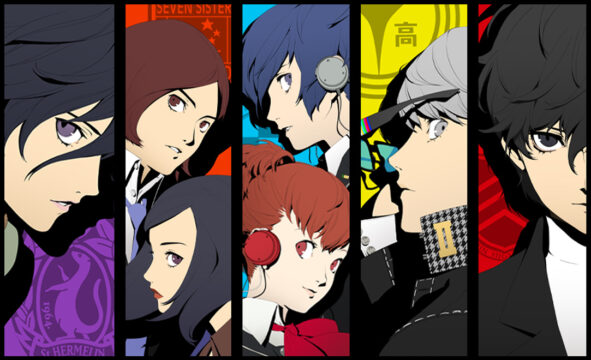


















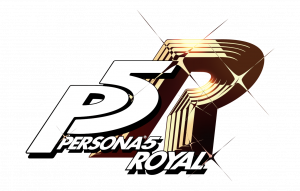















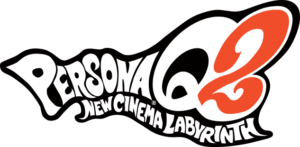


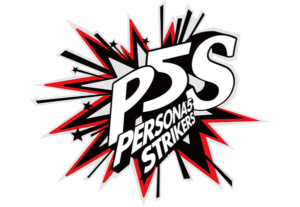




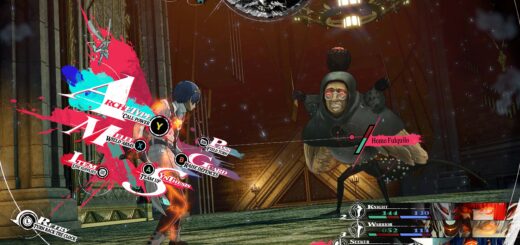



Recent Comments